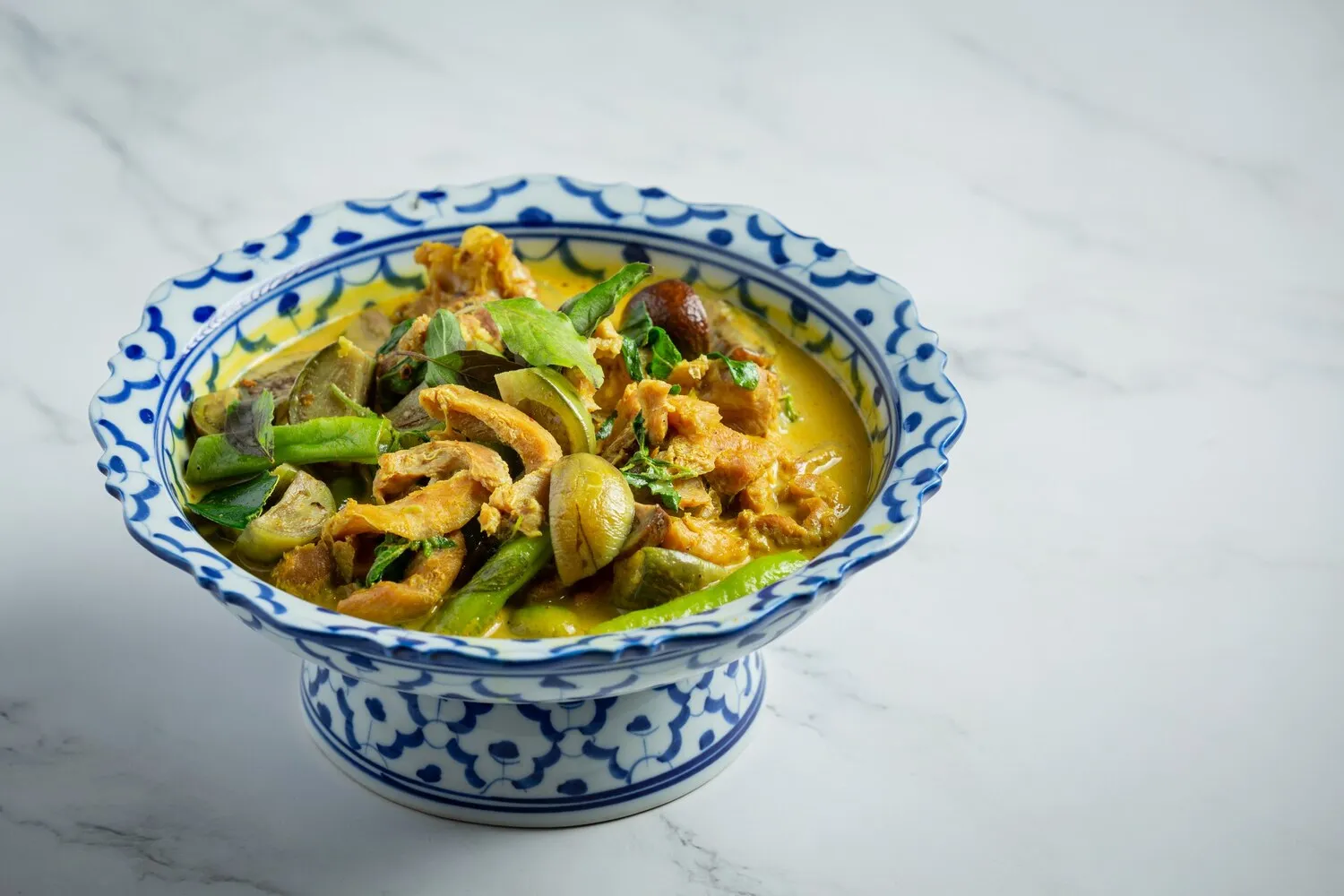
Red Curry
Red curry paste cooked in coconut milk with bamboo shoots, bell peppers, basil, and the customer's choice of meat (chicken, pork, beef, tofu, or shrimp). Served with rice.
Nutrition Facts
* The % Daily Value (DV) tells you how much a nutrient in a serving of food contributes to a daily diet. 2,000 calories a day is used for general nutrition advice.
Thai Pepper
Thai curry evolved with influences from India, particularly through trade and cultural exchange. Coconut milk, a staple in Southeast Asian cuisine, became a key ingredient, differentiating Thai curries from their Indian counterparts. Red curry is considered one of the foundational Thai curries, with regional variations emerging over time.
Red curry is a widely enjoyed and culturally significant dish in Thailand, often prepared for family meals, celebrations, and served in restaurants both domestically and internationally.
Family Meal Staple
Red curry is frequently prepared at home as a comforting and shared meal, with variations adapted to family preferences and available ingredients.
Restaurant Standard
It's a ubiquitous dish found on the menus of almost every Thai restaurant globally, showcasing the global appeal of Thai cuisine.
Offering to Monks
Like many Thai dishes, red curry can be offered to monks as a form of merit-making.
Regional Variations
Different regions of Thailand may have their own unique twists on red curry, using local ingredients and adjusting the spice levels.
Red curry is a harmonious blend of spicy, sweet, savory, and creamy flavors, primarily derived from red chilies, coconut milk, and a complex curry paste.
The dominant flavor is the heat from dried red chilies, balanced by the richness and sweetness of coconut milk. The curry paste typically includes ingredients like galangal, lemongrass, kaffir lime leaves, garlic, shallots, coriander root, and shrimp paste, contributing layers of citrusy, earthy, and umami notes. Fish sauce adds a salty depth, while palm sugar introduces a touch of sweetness. Basil (usually Thai basil) provides a fresh, anise-like aroma. The vegetables, particularly eggplant and bell peppers, absorb these flavors, offering textural contrast.
Spice Level Control
Adjust the amount of red curry paste to control the spice level. Start with a smaller amount and add more to taste. Remove chili seeds for a milder heat.
Fresh Ingredients Matter
Using fresh herbs and vegetables significantly enhances the flavor. Fresh galangal, lemongrass, kaffir lime leaves, and Thai basil make a noticeable difference.
Coconut Milk Quality
Use high-quality coconut milk with a high fat content for a richer and creamier curry. Full-fat coconut milk is generally preferred.
Balancing Flavors
Taste and adjust the seasoning throughout the cooking process. Balance the spicy, sweet, salty, and sour elements to achieve a harmonious flavor profile.
Proper Technique for Curry Paste
If using store-bought paste, sautéing the paste in oil before adding the coconut milk helps to release its flavors. If making homemade paste, ensure ingredients are finely ground to avoid a grainy texture.
Explore additional Curry dishes and restaurants
Explore CurryDiscover top dining spots and culinary experiences in Lubbock.
Explore LubbockLearn more about the food culture, restaurant scene, and culinary heritage of United States.
Explore United States